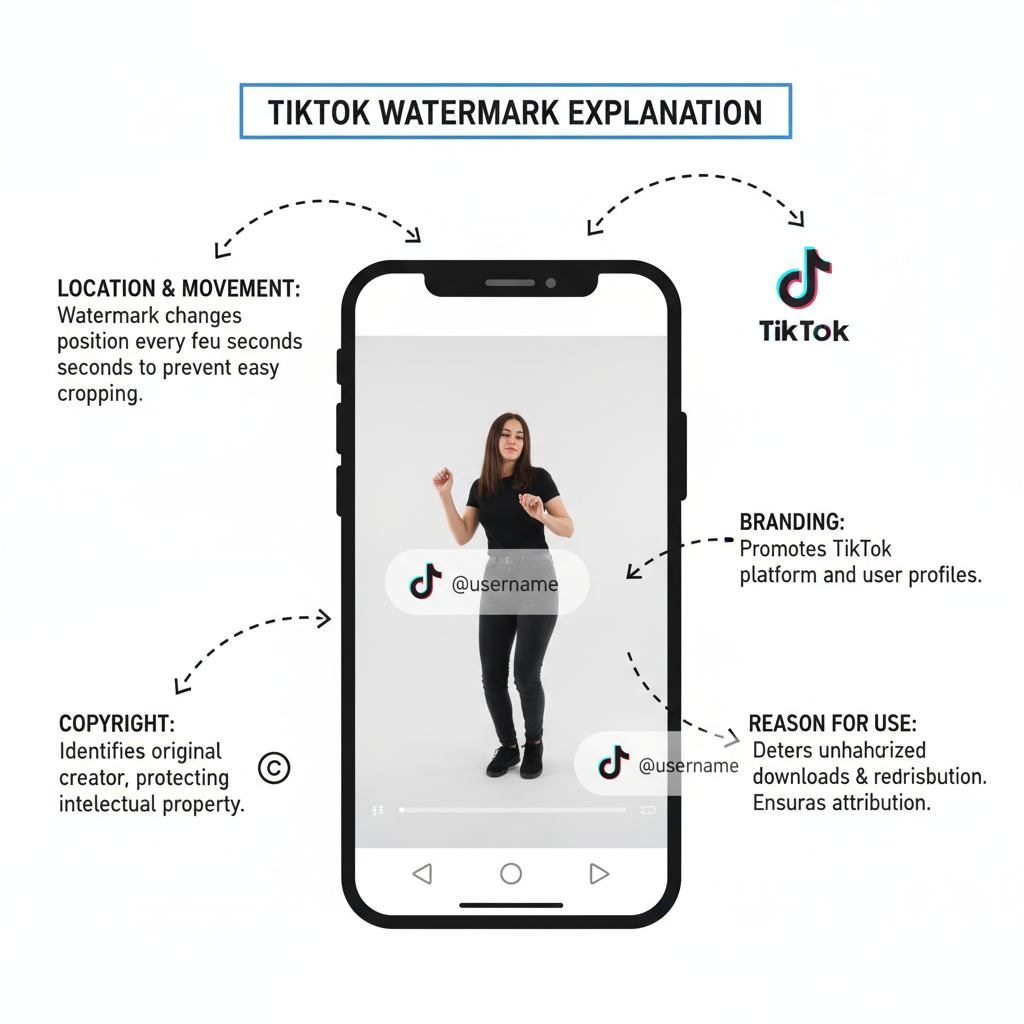How to Remove TikTok Watermark from Videos Safely
Learn safe and legal ways to remove TikTok watermarks, from cropping and blurring to using creator-enabled downloads, while protecting video quality.

How to Remove TikTok Watermark from Videos Safely
TikTok is one of the most popular platforms for short-form video, but downloaded content usually includes a moving logo and username overlay. Many users search for how to remove TikTok watermark to improve aesthetics, repurpose videos, or keep personal archives. In this guide, we’ll explain what the watermark is, the legal and ethical implications of removing it, and safe, practical methods to do so while protecting video quality.
---
Understanding What the TikTok Watermark Is and Why It's Added
The TikTok watermark is a semi-transparent, moving overlay of the TikTok logo and the original uploader's username. It typically jumps between two corners of the video and is automatically placed whenever you download from the app.
Purpose of the watermark:
- Branding – Maintains TikTok visibility when videos are shared off-platform.
- Attribution – Ensures the creator receives credit, deterring reposting without acknowledgment.
- Copyright protection – Acts as a prominent copyright notice in the video content.
---
Risks and Legal Considerations of Removing Watermarks
Before you attempt removal, it’s important to understand potential consequences:
- Copyright infringement – Altering content without permission can violate intellectual property rights.
- Terms of service violations – TikTok prohibits editing out attribution without the creator’s consent.
- Reputation damage – Reposting another person’s content without credit is viewed as unethical, even if legal action is not taken.
Key takeaway: Modifying a video for private viewing may be permissible, but using it for public or commercial purposes without consent can result in legal and reputational risks.
---
Method 1: Trimming the Video Edges to Crop Out the Watermark
Cropping the corners where the watermark appears is straightforward but can reduce visual quality.
Steps:
- Open your preferred video editing app (e.g., iMovie, Adobe Premiere Rush, CapCut).
- Import the TikTok video to the timeline.
- Use the crop tool to cut out watermark sections.
- Export the cropped video.
Pros:
- Simple and quick.
- Completes removal in the cropped areas.
Cons:
- Alters video layout and framing.
- Reduces resolution and may cut out important elements.

---
Method 2: Using Video Editing Apps to Blur or Mask the Watermark
When cropping would ruin the composition, blurring or masking offers a cleaner alternative.
How to Blur/Mask:
- Open your video editor (such as Filmora, Movavi, or Final Cut Pro).
- Create a blur or pixelation effect layer positioned over the watermark.
- Track the watermark’s movement frame by frame or with motion tracking tools.
- As an alternative, overlay your own logo or a static image.
Advantages:
- Retains original framing and resolution.
- Allows branded overlays.
Disadvantages:
- Requires more editing time.
- Some watermark movement may remain faintly visible.
---
Method 3: Downloading via TikTok Without Watermark (Where Available)
Creators can enable no-watermark downloads before posting.
Checking for no-watermark downloads:
- Tap the “Share” icon and check download options.
- Some accounts using TikTok Business Suite or Creator Tools can access higher-quality, watermark-free versions directly.
This is the safest and most legitimate method as it’s enabled by the content owner.
---
Method 4: Using Third-Party Websites or Apps
Numerous sites and mobile apps claim to remove TikTok watermarks (e.g., SnapTik, SSSTikTok).
Pros:
- Simple: Paste the TikTok video URL, click download, and get a watermark-free file.
- Often preserves original resolution.
Cons and Risks:
- Privacy – Unknown services may collect your data or videos.
- Security – Risk of malware or ad traps, especially from unverified app stores.
- Legality – May infringe on copyright or violate TikTok’s terms.
Safety tips:
- Choose reputable, well-reviewed services.
- Don’t enter personal or login information.
- Scan downloads with antivirus tools.
| Criteria | Third-Party Sites | Official Download |
|---|---|---|
| Legality | Questionable | Generally safe |
| Video Quality | Often good | Good |
| Privacy Risk | Higher | Low |
| Ease of Use | Easy | Easy |
---
Method 5: Screen Recording TikTok Videos
Screen recording captures the video exactly as displayed on your device.
Steps:
- Activate your device’s screen recording feature.
- Play the TikTok video in full-screen mode.
- Save the recording and trim unwanted sections in an editor.
Pros:
- No third-party downloads needed.
- Simple to execute.
Cons:
- Potential quality loss due to compression.
- Copyright concerns remain.
---
Best Practices for Maintaining High Quality
When removing or obscuring a TikTok watermark:
- Export at the original video resolution or higher.
- Edit in lossless formats (ProRes, DNxHR) before converting to delivery format.
- Avoid multiple exports that re-compress the file.
- Adjust bitrate and codec to optimize clarity.

---
Ethical Ways to Repurpose TikTok Content
Even after removing a watermark, crediting the original creator fosters goodwill:
- Mention the creator in captions or credits.
- Ask permission for reposts.
- Use TikTok’s duet or stitch features instead of downloading.
- Remix ideas rather than reusing entire clips.
---
Final Thoughts and Content Strategy
Knowing how to remove TikTok watermark can be helpful for private use, archiving, or educational purposes with consent. Nonetheless, the most ethical and sustainable approach is creating your own original content.
Instead of dedicating time to editing out branding, try:
- Filming videos inspired by TikTok trends.
- Giving attribution and collaborating with other creators.
- Incorporating stock or licensed footage without watermarks.
By blending technical skills with ethical practices, you’ll avoid legal pitfalls and grow an authentic audience base.
---
Summary:
Removing a TikTok watermark is technically possible in multiple ways—cropping, masking, downloading with permission, using trusted third-party tools, or screen recording. However, always weigh the legal, ethical, and quality implications. Create your own content or obtain permissions for the safest strategy.
CTA:
Want to level up your TikTok presence? Experiment with original videos and give credit where it’s due—you’ll build a reputation as a creative, trustworthy brand.



